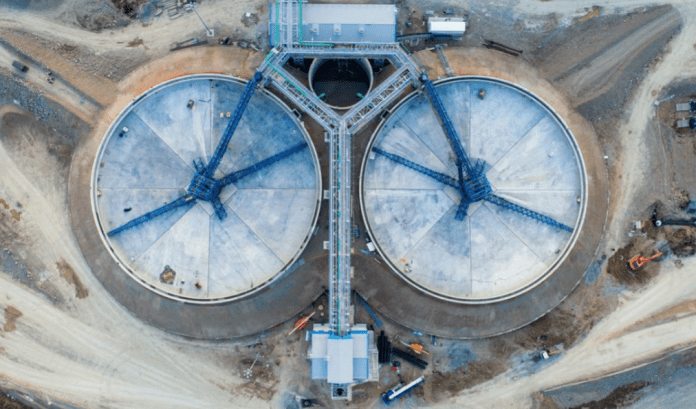Nokia has picked up a couple of other contracts for deployment of private cellular networks in the mining sector, it has said, with Russian palladium and nickel mining company Norilsk Nickel (Nornickel) and with Chilean copper mining company Codelco.
The new announcements — by Nokia’s regional operations, made this week and the end of last year, respectively, originally in local language releases — follow on from its deal last week with South Africa-based mining company Gold Fields to deploy private LTE with América Móvil at the Salares Norte mine in Chile.
Nokia claims to have supplied 40-odd mines, among its stated roster of 260-odd enterprise customers for ‘private wireless’. It has contract-wins with Vale and Vivo to extend private LTE to the Serra Leste mine in Brazil, with the mining division of Swedish tool manufacturer Sandvik for deployment of a 5G SA network at a test mine in Finland, and for private LTE in NORCAT’s underground test mine in Canada. It also has a five-year tie-up with Telefónica for private LTE at the Minera Las Bambas copper mine in Peru.
The arrangement with Nornickel — which claims to be the world’s largest producer of palladium and high-grade nickel, as well as producing platinum, cobalt, copper and rhodium — has developed from a test project in the deepest mine in the Europe and Asia region, part of Nornickel’s ‘Skalysty’ mining complex, showing “industrial-grade” LTE and 5G can be supported at a depth of at least 875 metres.
Nornickel, which also runs production sites in Finland and South Africa, is looking to make the Skalisty complex, which reaches 2,500 metres at its deepest point, fully autonomous by 2025. The new private cellular tests at the site also involved Sweden-based mobile operator Tele2, along with Russia-based SPBEK Mining, and also Qualcomm.
The setup was piloted simultaneously in 5G and LTE bands to support mission-critical and business-critical functions, including voice and data communications, video surveillance, remote video-based management of machinery, and communications between production sites and the control centre. Nokia said it will bring opportunities in the areas of “robotics, remote and autonomous operations, analytics and security”.
Liana Ermishina, director of IT at Nornickel, said: “The world is looking closely at the potential of 5G in industry. Our company is no exception. Industrial automation at Nornickel mines is constantly increasing, [and] innovative systems and technologies are being introduced, driving further requirements for wireless networks. We are considering the use of LTE and 5G underground… to improve safety measures, and to implement autonomous mining and remote control of machinery.”
Meanwhile, Nokia’s deployment for state-owned National Copper Corporation (CODELCO) in Chile, only just translated for foreign press, saw the installation of a 5G-connected camera in the company’s Radomiro Tomic Division to capture images of the crushing area in the mine, where materials from trucks are made broken-down for the conveyor belt, to go to the ‘stacker’.
A 5G antenna was installed to carry high-definition camera footage to the company’s new ‘Integrated Strategic Operations Center’ (CIO-E), on the eight floor of the company headquarters, in order to show “immediate processing data, such as waiting times and material unloading”. Nokia said: “It allowed the [operations centre] to receive all the information wirelessly and in real time — about the trucks, operators, processing times, wait times.”
Again, Nokia referenced autonomous vehicles and remote machinery as prime use cases for 5G in the mining sector. It quoted Nokia-commissioned research from analyst house Omdia that 5G will generate an economic impact of $207 billion in Chile by 2035, with $41 billion in the local ICT industry, $29 billion in the country’s manufacturing sector, and $23 billion in mining. The CODELCO deployment is the mining industry’s first 5G pilot in the country, said Nokia. Local IT company PSINet was also involved.
Álvaro García, vice president for technology and business process automation at Codelco, said: “Being the first 5G pilot in mining is in line with the accelerated adoption of technologies we have implemented since 2019. [5G is] one of the main enablers of CODELCO’s digital transformation, [and is part of] a pioneering vision [to incorporate technologies] such as advanced analytics and operational automation.”
Gloria Hutt, Chile’s minister for transport and telecoms, said: “We are working to facilitate the conditions for the different industries to learn about [5G] so they can adopt it when it is available. The development of 5G will contribute to Chile’s productivity, in addition to improving people’s quality of life through the development of applications such as telemedicine, the Internet of Things and distance education, among other benefits.”
Baldo Prokurica, minister for mining, said: “This is a historical milestone for Chilean mining. The country’s main industry is opening up to the new world of artificial intelligence, which will allow faster access to data and analysis to improve processes, increase productivity, and move towards a safer activity.”

